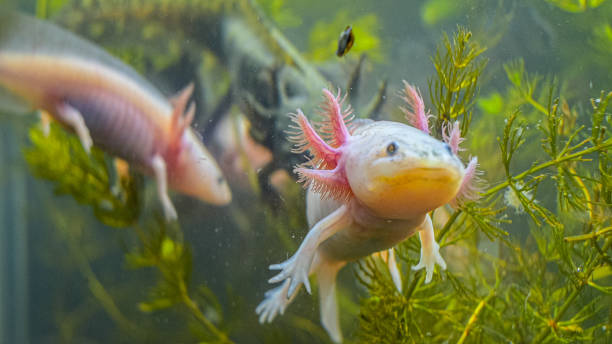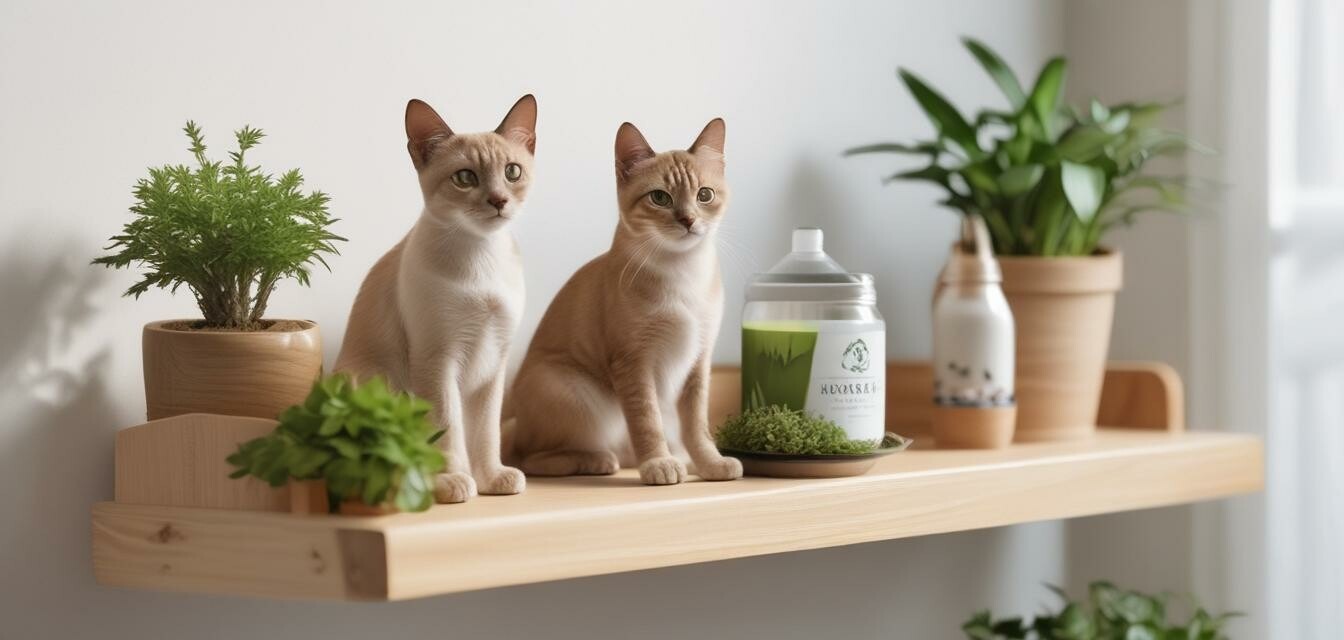
Axolotls as Pets: The Smiling Amphibians Taking Over Social Media
The axolotl, with its captivating smile and unique charm, has become a social media sensation. This article explores why axolotls are so beloved as pets and their impact on online culture.
🐶 Pet Star
43 min read · 22, May 2025

Introduction: The Charm of the Smiling Amphibian
In a world full of cute cats and quirky dogs, there’s a new pet in town that has captured the hearts of animal lovers across the globe: the axolotl. This peculiar amphibian, with its wide, perpetual smile and frilly gills, has become an unlikely star on social media. Known for its regenerative abilities and fascinating appearance, the axolotl (Ambystoma mexicanum) is now more than just an exotic pet—it’s a cultural phenomenon.
From TikTok to Instagram, axolotls are consistently featured in viral videos and photos. They’ve sparked widespread curiosity and admiration, with millions of people captivated by their unique traits. But what is it about these adorable creatures that make them so lovable and widely adored?
In this article, we’ll explore why axolotls are becoming the go-to pet for many, how they gained popularity on social media, and what it takes to care for one. Whether you’re an avid animal enthusiast or just someone intrigued by the cuteness overload, this guide will give you all the details about these enchanting creatures.
Part I: What is an Axolotl?
An Overview of the Species
Axolotls are native to the lakes of Xochimilco, located near Mexico City. Unlike many amphibians, axolotls do not undergo complete metamorphosis. Instead of transitioning from water-dwelling larvae to terrestrial adults, they retain their juvenile features throughout their lives in a process known as neoteny. This is one of the primary reasons why they remain in the water and retain their gills throughout their entire life.
These amphibians are best known for their regenerative abilities. They can regrow lost limbs, damaged organs, and even parts of their spinal cord. This remarkable feature has earned them a significant amount of scientific attention, but it’s their quirky, almost comical appearance—combined with their peaceful demeanor—that has helped them rise to social media stardom.
Axolotls can vary in color, with the wild-type axolotl being dark and mottled, while other variations, such as leucistic (pale pink with black eyes) and golden albino, are more popular in captivity.
The Regenerative Marvel
What truly sets axolotls apart from other pets, and indeed most animals, is their ability to regenerate lost body parts. This regenerative power includes limbs, spinal cord sections, and even parts of their heart and brain. Research into this ability has made axolotls valuable subjects in scientific studies, particularly in the fields of regenerative medicine and stem cell research.
Their ability to regrow limbs after injury or amputation is often the subject of awe, and many people admire this regenerative trait, which adds to their mystique and appeal. The axolotl’s regenerative capacity has also made them popular in scientific circles and a subject of numerous documentaries and research articles.
Part II: The Rise of Axolotls on Social Media
From Internet Curiosity to Cultural Icon
Axolotls began gaining attention on social media platforms in the early 2010s, but their popularity exploded with the rise of TikTok and Instagram. Animal lovers across the world shared videos of their axolotls, often highlighting the creatures’ quirky behaviors and adorable features. The axolotl’s perpetual smile, coupled with its innocent, curious nature, made it a prime candidate for viral content.
Many videos feature axolotls swimming gracefully in aquariums, playing with decorations, or simply staring directly into the camera. Their calm demeanor and somewhat mysterious allure have made them a favorite among creators, influencers, and animal enthusiasts alike.
One of the key factors in their rapid rise to fame is how photogenic and video-friendly axolotls are. Unlike other pets that may be more difficult to film or photograph, axolotls spend much of their time swimming in clear water, often striking charming poses. Their wide, innocent eyes and ever-present smile only add to their visual appeal, making them irresistibly adorable for viewers online.
Viral Content and Axolotls' Impact on Pop Culture
Hashtags like #Axolotl, #AxolotlsofTikTok, and #AxolotlLove have gained millions of views, solidifying the axolotl’s place as a beloved internet sensation. This viral content has made the axolotl a mainstream cultural icon, appearing not only on individual user accounts but also on corporate and promotional social media pages.
Axolotls have even made their way into meme culture. There are countless memes featuring the axolotl’s smile, many of which are humorous and lighthearted. Memes like “When you’re just vibing” or “Living your best life” often feature the axolotl as the main character, further cementing its status as an adorable and relatable symbol of carefree joy.
Part III: Why Are Axolotls So Popular?
The Appeal of the "Smiling" Axolotl
The axolotl’s appearance is undoubtedly one of the biggest reasons for its online popularity. Their wide smiles and permanent baby-faced look endear them to many people. They appear to be perpetually happy, which resonates with the human desire for positivity and happiness in the digital age.
Their calm demeanor also adds to their charm. Unlike some more energetic pets, axolotls are relatively low-maintenance. They spend much of their time gliding slowly through the water, their gills waving gently as they explore their surroundings. This relaxed attitude makes them less demanding than more active pets, making them a good choice for individuals who may not have the time or energy for high-maintenance animals.
Additionally, axolotls are unique—there’s no denying the novelty factor. Their bizarre appearance and interesting biology make them conversation starters, and for pet owners, having an axolotl can be a badge of pride. They are distinct from typical pets like cats or dogs, and owning one provides a sense of individuality.
Scientific Fascination Meets Pet Enthusiasm
While the axolotl’s popularity in social media is largely driven by its adorable features, there’s another layer to its appeal: scientific curiosity. The regenerative abilities of the axolotl have made it a subject of great scientific study, and many pet owners are fascinated by the potential for axolotls to provide insight into human biology and healing processes.
For animal lovers who are also science enthusiasts, axolotls provide a rare combination of cute aesthetics and intellectual intrigue. This dual appeal has contributed significantly to their rise in popularity both online and in pet circles.
Part IV: Care and Maintenance of Axolotls as Pets
Setting Up the Perfect Axolotl Tank
One of the key considerations for potential axolotl owners is the setup of their living space. Axolotls require a tank that mimics their natural habitat—a cool, aquatic environment. A well-maintained aquarium with clean, filtered water is essential to keep your axolotl healthy. They thrive in temperatures between 60-64°F (15-18°C) and should not be exposed to warmer water, as this can stress them and reduce their lifespan.
Key elements of an axolotl tank setup include:
- Tank Size: A minimum tank size of 20 gallons for a single axolotl is recommended. A larger tank is better for water quality and provides ample space for the axolotl to roam.
- Water Quality: Axolotls are sensitive to poor water conditions. Regular water changes and an efficient filtration system are essential for maintaining good water quality.
- Substrate: Avoid gravel, as axolotls may ingest it, which can cause digestive issues. Sand or a bare-bottom tank is preferable.
- Decor: Axolotls enjoy hiding spots, so include rocks or plants in the tank, but make sure there are no sharp edges that could injure them.
Feeding and Diet
Axolotls are carnivores and feed on a diet that includes earthworms, small fish, and specially formulated axolotl pellets. It’s important to feed them regularly but not excessively, as overfeeding can lead to obesity, which can negatively affect their health.
Common foods for axolotls include:
- Live or frozen worms
- Small fish
- Axolotl pellets
Health and Lifespan
Axolotls are relatively hardy pets, but they can suffer from a range of health issues if not properly cared for. Common problems include skin infections, fungal infections, and digestive issues. Axolotls typically live for 10-15 years, but with proper care, they can live even longer.
Regular veterinary checkups are important to ensure your axolotl remains in good health, especially if you notice any changes in behavior, appetite, or physical appearance.
Part V: Axolotls in Popular Culture and Their Future
Axolotls as Symbols of Environmental Awareness
Axolotls have also become a symbol of environmental awareness. As a species native to the Xochimilco lake system in Mexico, they are critically endangered due to habitat loss, pollution, and invasive species. Efforts to protect the axolotl's natural habitat and raise awareness about conservation have grown alongside their popularity as pets.
As more people learn about the plight of the axolotl in the wild, there is increasing interest in supporting conservation efforts. Many pet owners and animal lovers now recognize the importance of preserving the species in its natural habitat, while also educating others about the environmental challenges faced by these unique amphibians.
The Cultural Impact of Axolotls: A Global Phenomenon
The Global Reach of Axolotls: From Mexico to the World
While axolotls are native to Mexico, their appeal has transcended national borders, making them a global sensation. The internet has played a pivotal role in making axolotls an internationally recognized species. Today, axolotls are kept as pets all over the world, from the United States and Europe to Asia and beyond.
The cultural impact of axolotls extends beyond just being cute or quirky. For many people, owning an axolotl is a way to connect with a species that is rooted in a specific region of the world—Xochimilco, Mexico. This cultural connection highlights the importance of preserving the species, not just for their ecological value but also as part of the unique heritage of the Mexican people.
In Mexico, efforts to protect the axolotl and its natural environment have become a focal point for conservationists. Organizations and local initiatives are working to restore the axolotl’s native habitat, which is rapidly being eroded by urbanization and the introduction of non-native species. The connection between axolotls as a pet and their cultural significance is another reason why people are increasingly drawn to them, as they embody both a global fascination and a deeply local story.
Axolotls in the Art and Media World
Axolotls’ influence has also extended into the realm of art and popular culture. Artists, filmmakers, and creators across various media have embraced the axolotl’s unique look and symbolism. From animated movies to video games, axolotls have been featured as characters or mascots, further cementing their place in pop culture.
For example, in the video game world, the axolotl-inspired "Axie Infinity" has gained traction as a popular online game where players collect and battle digital axolotls. The game’s success has contributed to the axolotl’s growing fame and appeal, especially among younger generations.
Artists have also found inspiration in the axolotl’s fascinating appearance, incorporating its likeness into illustrations, sculptures, and even tattoos. These pieces often represent themes of regeneration, resilience, and the natural world—powerful concepts that resonate deeply in today’s world.
The Ethics of Keeping Axolotls as Pets
Should You Own an Axolotl?
As with any pet, there are important ethical considerations when deciding whether to own an axolotl. While they are fascinating and cute, owning one of these animals comes with a great deal of responsibility. Pet owners must be prepared for the long-term commitment of caring for an axolotl, which can live for more than a decade with proper care.
Before acquiring an axolotl, potential owners should thoroughly research the care requirements, including tank setup, water quality, diet, and overall health needs. It's also important to ensure that the pet is sourced from an ethical breeder who adheres to regulations that prioritize the animal’s well-being.
Another ethical consideration is the environmental impact of breeding axolotls for the pet trade. While captive breeding has alleviated some pressure on wild populations, there is still a need to ensure that breeding practices are sustainable and do not contribute to the depletion of wild axolotls. Buyers should be vigilant about supporting breeders who are committed to ethical practices and conservation efforts.
In addition, owners should be mindful of their role in promoting the conservation of the axolotl in its natural habitat. Supporting organizations dedicated to habitat preservation and raising awareness about the species’ endangered status can contribute to the long-term survival of these unique creatures.
Conclusion
In conclusion, the axolotl has emerged as more than just a quirky pet; it has become a global sensation. With its charming smile, unique regenerative abilities, and captivating appearance, the axolotl has taken the world by storm, from being a scientific marvel to an internet star. The rise of axolotls in the pet community, especially on social media platforms, highlights the growing desire for more unusual, fascinating animals in the home. Their status as a symbol of joy and resilience, combined with their low-maintenance nature, has made them a favorite among those looking for a unique, easy-to-care-for pet.
However, with this newfound popularity comes a responsibility to ensure that axolotls are cared for ethically and sustainably. Pet owners must understand the nuances of axolotl care, including proper tank setup, diet, and health needs, while also supporting conservation efforts to protect this endangered species in the wild. As they continue to thrive in virtual spaces, their importance in real-world conservation efforts cannot be understated.
The axolotl’s journey from obscurity to online fame reflects the growing trend of unique pet ownership and the power of social media to spread awareness about fascinating species. As we continue to learn about these extraordinary amphibians, it is vital to maintain a balance between enjoying them as pets and taking action to preserve their habitats and existence in the wild. With proper care, ethical breeding practices, and greater awareness, the axolotl’s future—both as a pet and a symbol of environmental stewardship—looks bright.
Q&A
Q: What makes axolotls such unique pets?
A: Axolotls are unique due to their regenerative abilities, calm demeanor, and their ability to retain juvenile features throughout life. Their wide smile and quirky appearance make them especially endearing.
Q: How long do axolotls live?
A: Axolotls typically live between 10 to 15 years, but with proper care, they can live even longer, sometimes reaching up to 20 years.
Q: How should I care for an axolotl’s tank?
A: Axolotls need a minimum 20-gallon tank with cool water (60-64°F), a filtration system, and a safe substrate like sand. They should also have hiding spots and space to swim.
Q: Do axolotls need a special diet?
A: Yes, axolotls are carnivores and eat a diet consisting of earthworms, small fish, and axolotl pellets. It’s important to feed them regularly but not overfeed.
Q: Can axolotls regenerate lost limbs?
A: Yes, axolotls are famous for their ability to regenerate not only limbs but also parts of their spinal cord, heart, and even parts of their brain.
Q: Where are axolotls originally from?
A: Axolotls are native to the lakes of Xochimilco, near Mexico City. They are critically endangered in the wild due to habitat loss and pollution.
Q: Are axolotls easy to take care of?
A: While axolotls are relatively low-maintenance compared to other pets, they still require proper care, such as maintaining clean water, the right temperature, and a balanced diet.
Q: Can axolotls live with other fish or animals?
A: Axolotls should not be kept with aggressive fish or other animals that could harm them. They are best kept alone or with peaceful tank mates of similar size.
Q: How do axolotls breathe?
A: Axolotls have both gills and lungs, but they rely primarily on their gills to breathe underwater. They can also gulp air at the surface if necessary.
Q: How can I contribute to axolotl conservation efforts?
A: Supporting ethical breeders, educating others about axolotl care, and donating to conservation organizations working to protect axolotl habitats in the wild are great ways to help preserve the species.
Similar Articles
Find more relatable content in similar Articles

How Pets Strengthen Family Bonds...
Pets are more than just compan.. Read More

Vegan Pet Toys and Accessories That Last Longer...
As pet owners grow more eco-co.. Read More

How Climate Change Affects Wild and Domestic Animals...
Climate change is dramatically.. Read More

Sustainable Pet Products: What to Look for in 2025...
As sustainability becomes a ce.. Read More
Explore Other Categories
© 2024 Copyrights by rPets. All Rights Reserved.